The meeting opened with some introductory words from Chairman Roger Gilbert and a welcome to our demonstrator this evening, Ian Ethell.
Ian brought along some examples of his work for us to see and explained that he would show us the making of a winged bowl, of which there were several examples on display.
He quickly ran through the seven fundamentals of woodturning – Wood grain; Chucking; Sharp Tool; Tool Rest Height, Rotation Speed; Stance; Technique – and said that much of his turning would be done using a bowl gouge with a 40/40 grind as espoused by Stuart Batty, and the heel ground off. He later provided a handout explaining the seven fundamentals in some detail – useful.
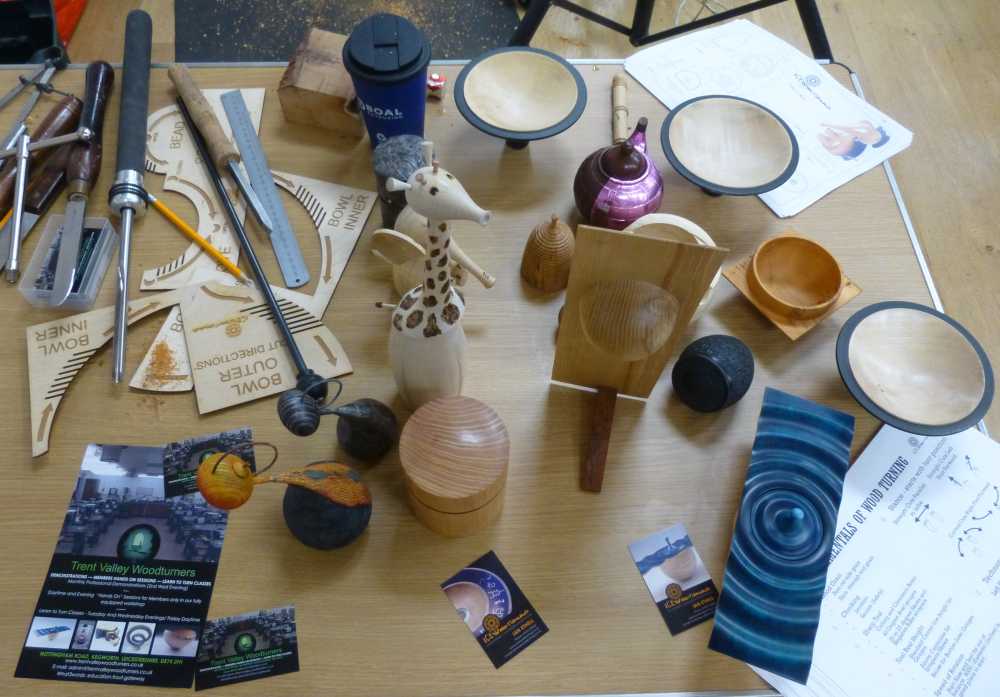
The bowl would be made from a yew blank of (my estimate) about 200 x 100 x 50mm in size. The blank was mounted between centres and a groove cut to suit the chuck jaws, and the blank then reversed.
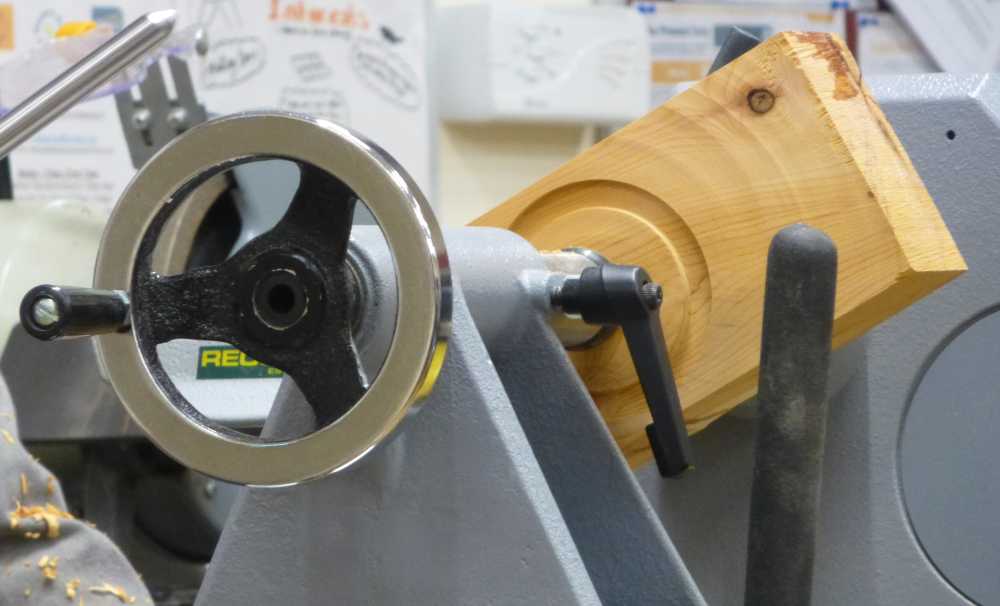
Next, the waste in way of the wings was removed, taking care to keep clear of sharp edges. The bulk of the wing waste was removed with a bowl gouge, starting on the outside, and moving in in steps, and then squared off with a negative rake scraper. There is a lot of air when turning a bowl of this type, so Ian held the lathe speed down to about 800rpm. As it is the burr on the scraper that does the work, trips to the grinder after every 20 or 30 seconds of scraping were required to restore the burr.
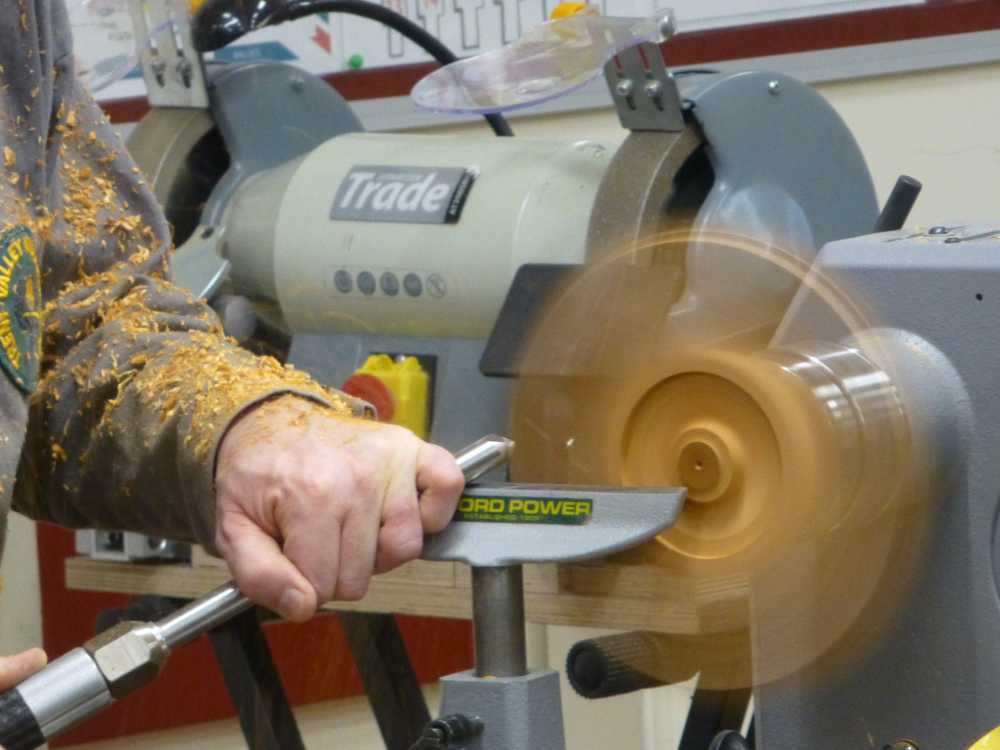
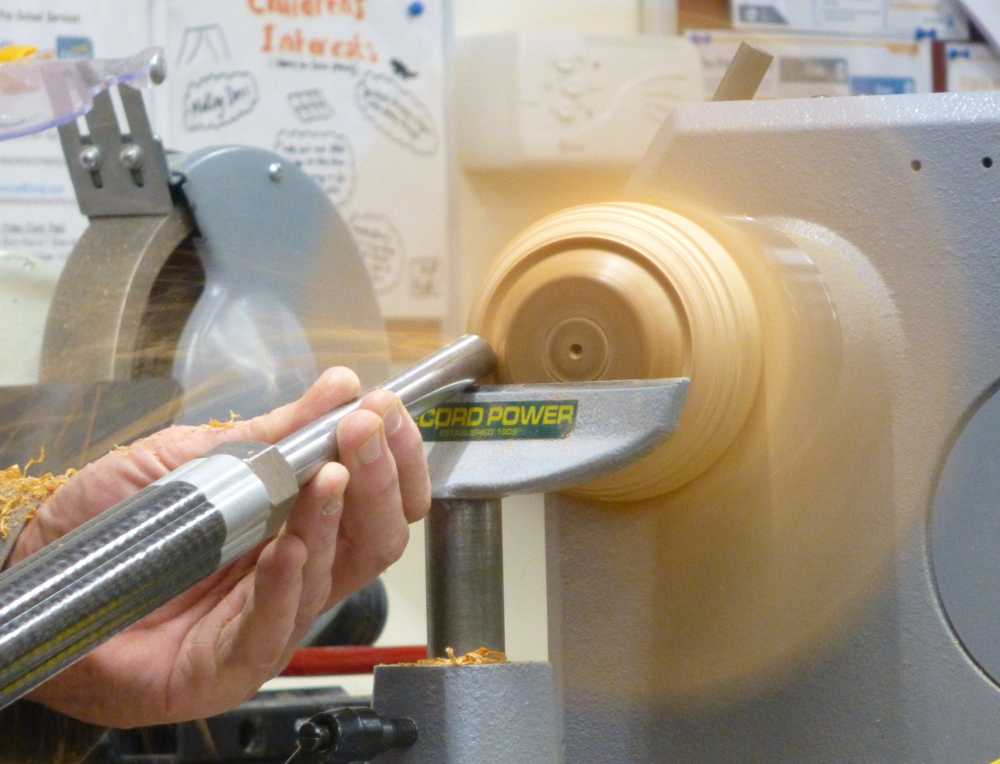
This step process was repeated until the mass of wood remaining in the centre was ready for shaping into the bowl. With the tailstock removed to improve access, he made a series of cuts from the tenon to the wings in single fluid movements. Once satisfied with the shape, Ian made a tenon on the bottom of the bowl (bowl gouge: included angle 80 degrees – ideal) and then reverse mounted it in the chuck.
He then started thinning the wings in stages on the top side of the bowl, using the same process as for the underside. As the edge of the bowl was approached, he started looking closely at the shape so that the bowl curve followed through the wings.
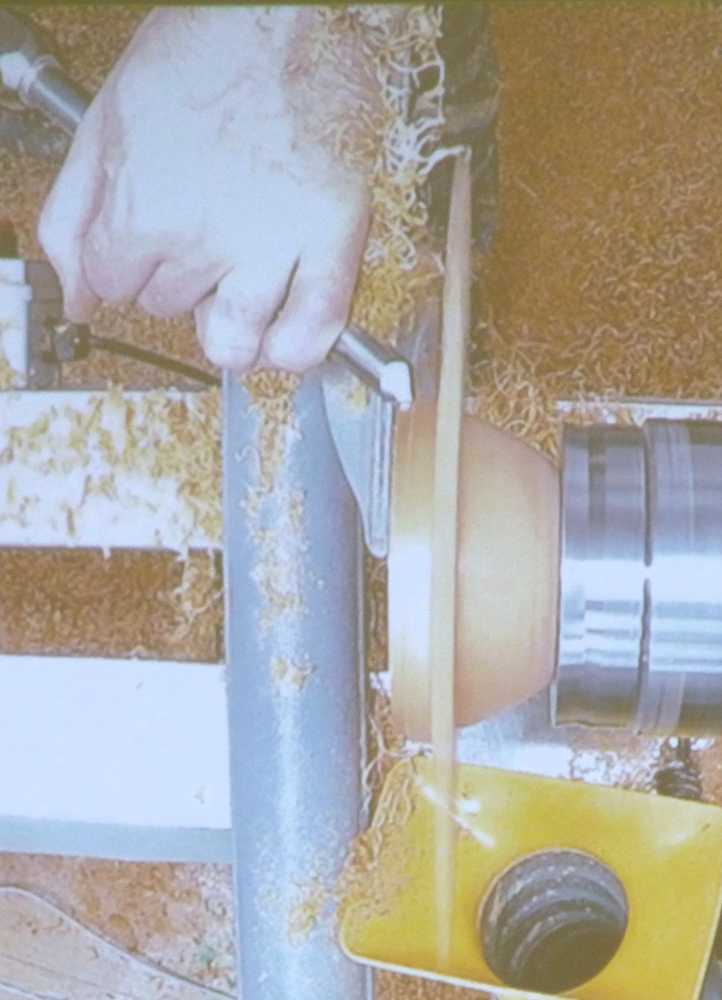
For the final clean-up at the bowl/wing junction he used a beading and parting tool, ground with a burr on all edges.
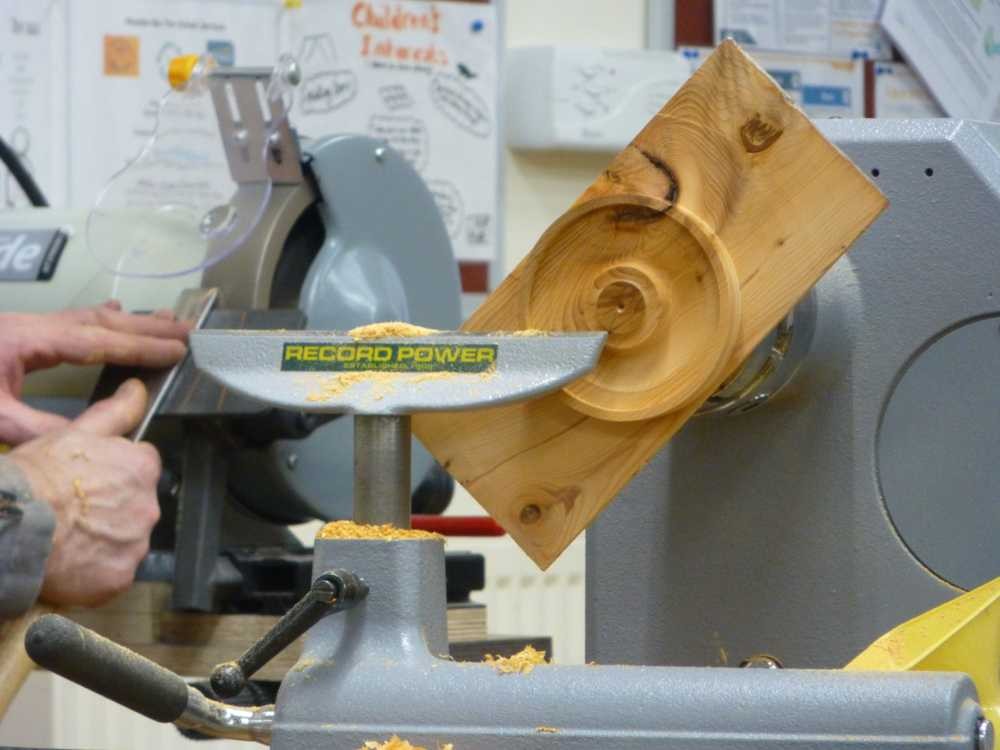
Next, Ian hollowed out the bowl with his 40/40 bowl gouge, switching to a gouge with a steeper grind to finish the bottom of the bowl. This was followed up with a scraper to remove the central pimple and clean up.
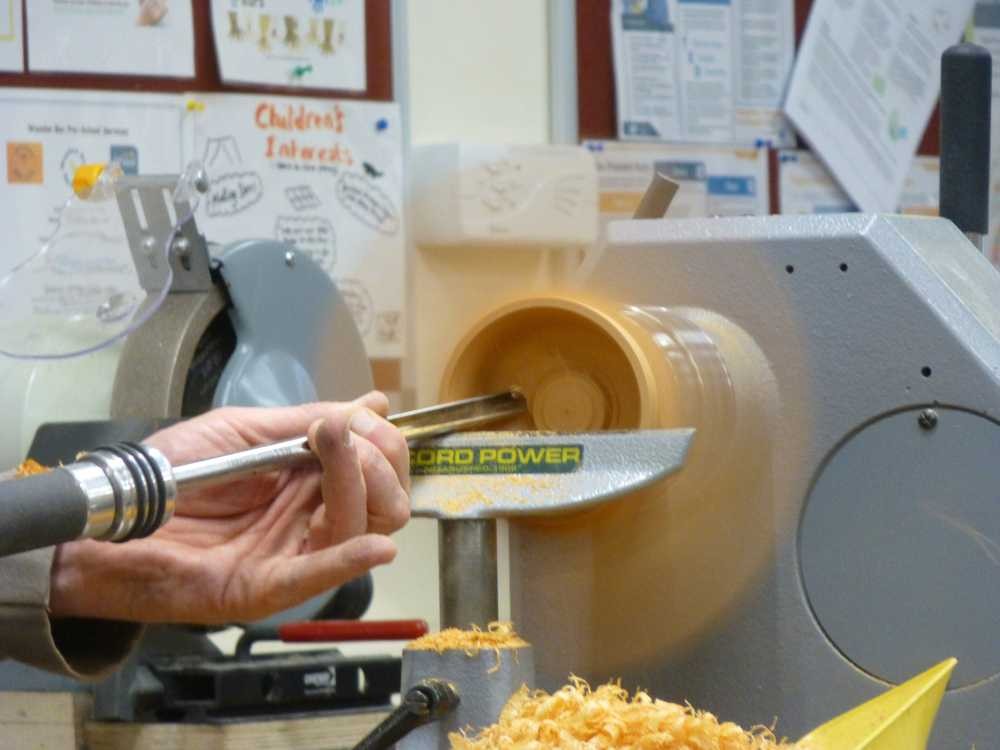
Next, the bowl was reversed and held by the tailstock onto the jaws of the chuck, suitably protected by tissues – a jam chuck. Finding it difficult to gain access to the foot of the bowl with the tailstock in place, he ground his bowl gouge bevel to 60 degrees-ish and proceeded to refine the foot and underside of the bowl, finishing off with a skew chisel used as a negative rake scraper.
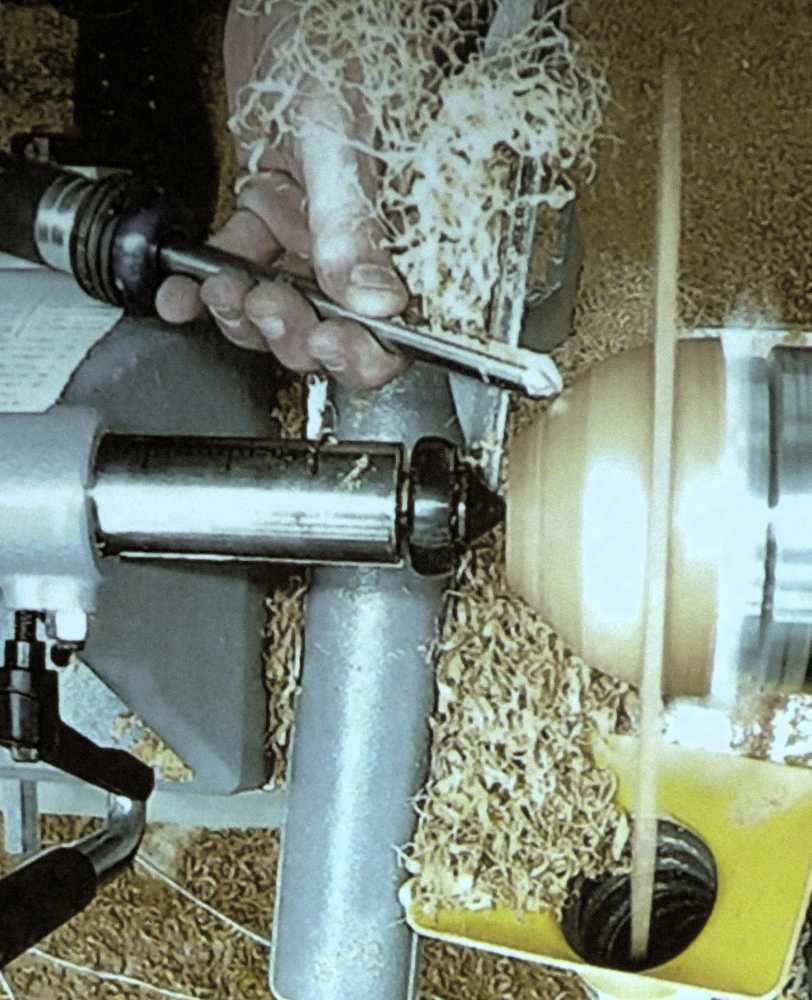
There was no time for a finish to be applied but the bowl looked pretty good as it was, although Ian did explain that a significant flaw running through both the wing and the wall of the bowl meant that he couldn’t go as thin as he would have liked. There was already plenty of air without separating into multiple pieces!
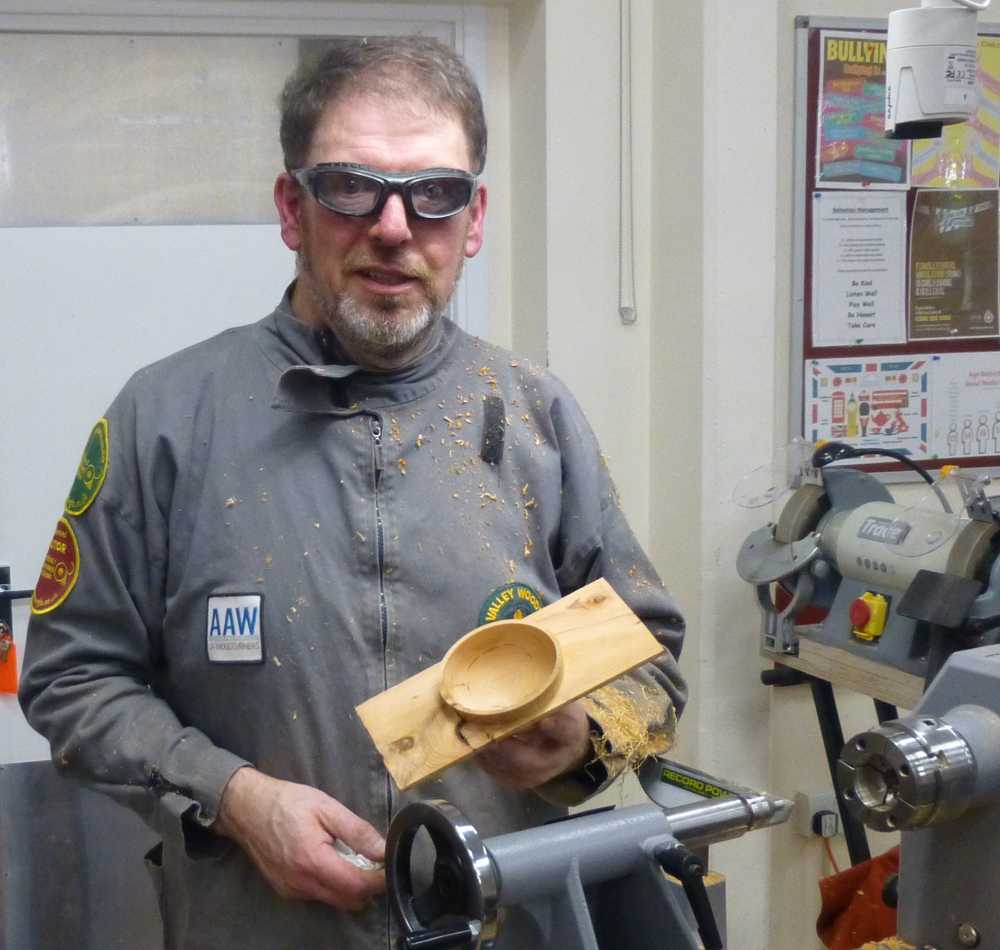
This was an interesting demo with plenty of explanation by Ian on how and why he was doing things in a particular way, and quite a lot of interest was shown in his sharpening grinder setup – Christmas is coming after all!
